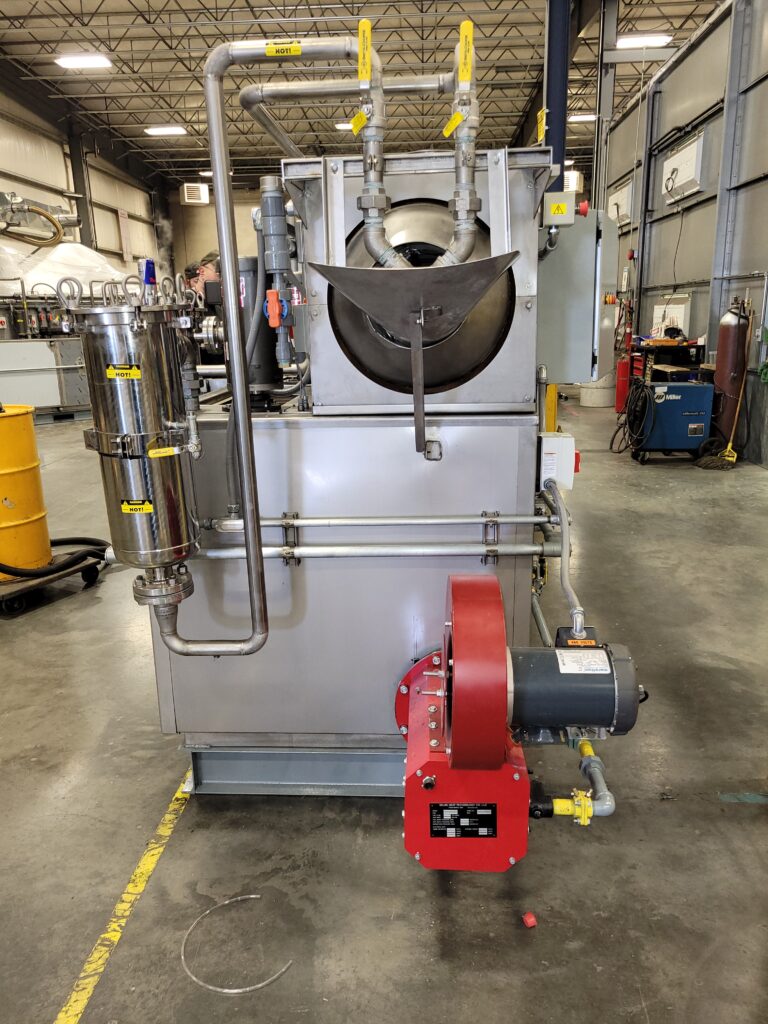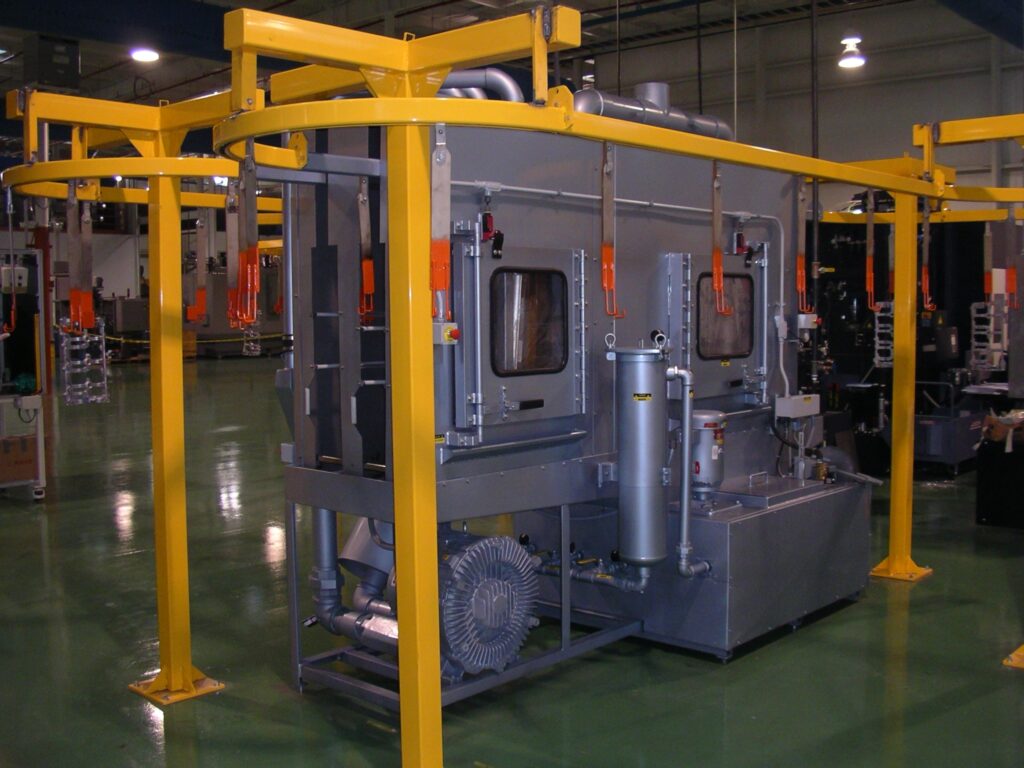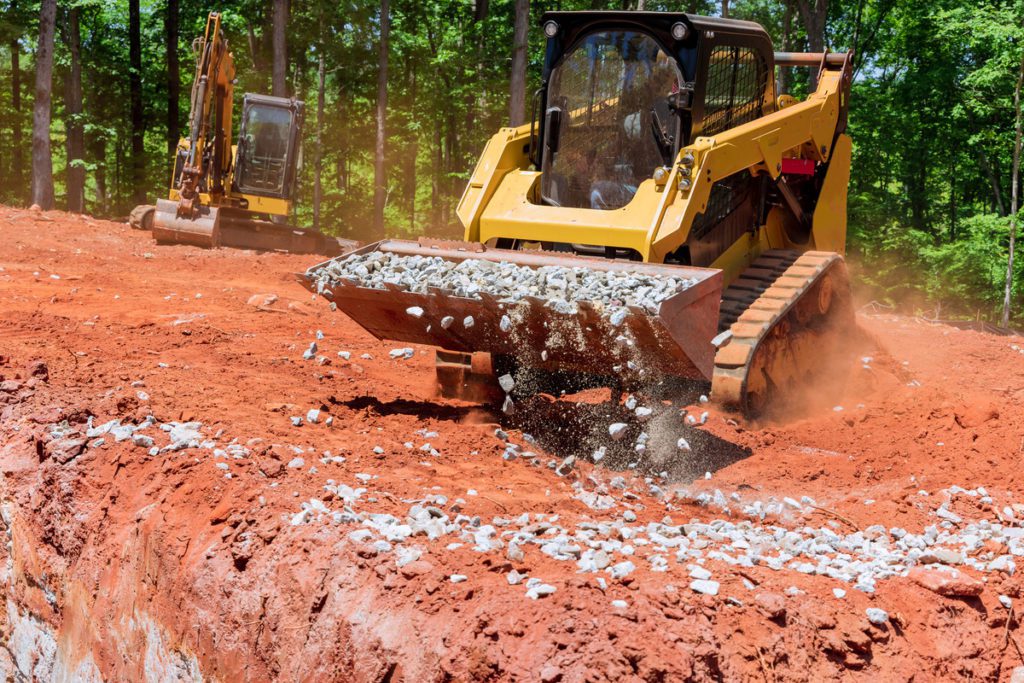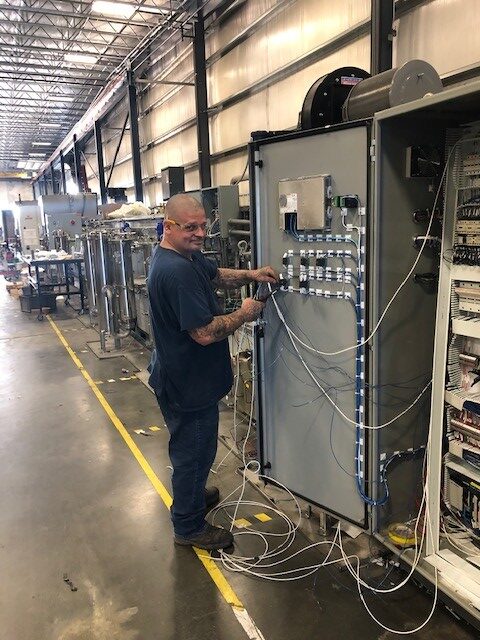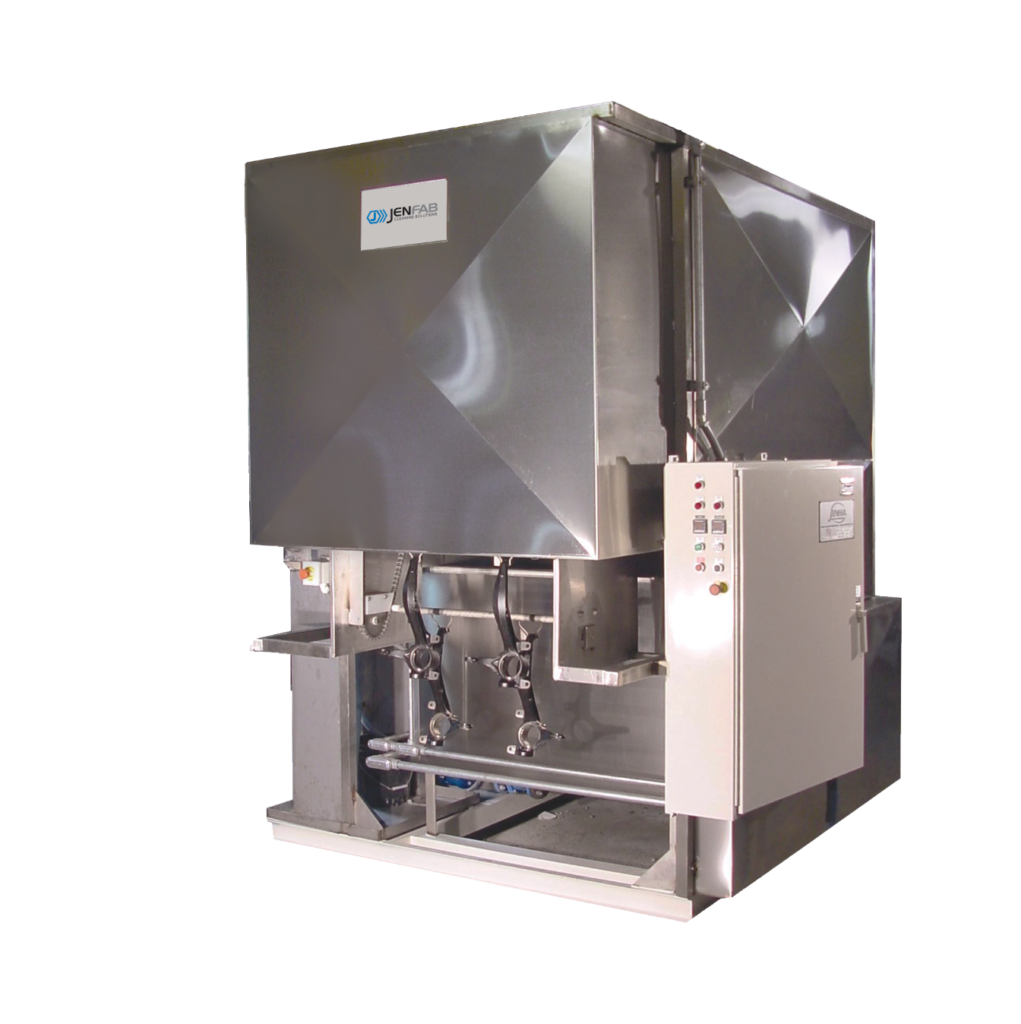Add heat to any chemical reaction. What happens? The reaction speeds up. Heating your aqueous solution accelerates cleaning, so parts are processed faster and more effectively.
Parts washers have heated tanks that maintain the cleaning solution’s temperature. Typical operating temperatures range from 130℉ to 190℉. Other cleaning factors include time and agitation. These factors, combined with temperature and chemistry, work together for optimal cleaning performance.
Heat comes from various sources. Learn more about the types of heaters available and how to prevent steam-related corrosion inside a heated parts washer.
3 Energy Sources for Heated Parts Washers
Custom parts washers can be heated with electricity, gas or in-plant steam. Our engineers will design a heated parts washer for your facility according to your requirements and make recommendations for an efficient machine.
- Electric parts washers. Converting electricity into heat is an energy-efficient way to warm the solution tank. Machine installation is easier since you do not need pipes for gas or condensate return systems.
- Gas parts washers. Gas systems provide the highest heat input, yielding shorter warm-up times. If your heated parts washer is gas-powered, you will need access to natural gas at your facility and pipes that connect to the machine’s gas burner.
- Steam parts washers. You can make energy transfers inside your facility with steam. Using steam to heat your parts washer provides high heat and fast recovery times. You will need a condensate return system or pump to collect the condensation generated from the parts washer.
Types of Parts Washer Tank Heaters
There are several ways to heat small to medium solution tanks, including but not limited to the options below:
Direct Immersion Heaters
Direct immersion heaters increase transfer heat by having contact with the liquid. Since direct contact is required, these heaters are installed within the cleaning solution and must remain immersed in the solution at all times.
L-Shaped Heaters
L-shaped immersion heaters, or over-the-side heaters, sit inside the solution tank. They warm the liquid without penetrating the tank walls. Over-the-side immersion heaters distribute heat evenly, so the aqueous cleaning solution maintains its temperature.
The heated portion sits along the tank walls or at the bottom of the tank. Maintenance is easy with this type of heater because it is installed at the top of the tank.
Screw Plug Heaters
Screw plug immersion heaters warm small parts washers well. Each tubular heater is welded to an NPT pipe fitting and installed through threaded couplings in the tank walls. The heating element and sheath are immersed in the liquid, while the control or thermostat remains outside the tank.
Flanged Heaters
Flange immersion heaters are used for larger containers and are often found in water treatment or petroleum applications. These heaters are bolted or welded to a flange. That flange is then welded or bolted to the tank wall.
Indirect Immersion Heaters
Not all immersion heaters use direct contact with the liquid to transfer heat. Some immersion heaters increase temperatures indirectly.
Pipe and infrared heaters are inserted into a pipe before being immersed in the cleaning solution. The heating elements warm the air inside the pipe, and the warmth of the pipe heats the liquid. Pipe heaters are used for low-temperature applications.
Reduce Heat Loss: Tank Insulation
Heat loss is common with spray cleaning. As the cleaning solution contacts cooler air and hits cabinet walls, it evaporates and decreases in temperature.
Insulating a parts washer’s cabinet and tank can reduce the amount of heat lost during each cleaning cycle. You can achieve the most energy savings by reviewing your parts washer’s heating process and storage. Insulation, shielding and systems that recoup heat make for more energy-efficient cleaning.
Exhausting Methods: Designing for Steam Generation
Hot water and metal aren’t the best combination. Heat accelerates corrosion.
As water is heated, it generates water vapor and steam. Aqueous parts washers must include a way to release and recirculate the steam that collects in the cabinet.
An excess of humidity can cause rust and corrosion on cabinet walls, turntables and sprayers. Hot steam from a parts washer could harm surrounding equipment or employees working in the area.
Cabinet Exhaust Fan
Aqueous parts washers may include an exhaust fan with an external duct to reroute steam outside the facility. Exhaust piping can be vented through the ceiling or walls. Steam generated from the parts washer is released away from the production area.
Since piping is involved, there are costs associated with adding ductwork to your building, and the parts washer will have to remain in one location. Choose a location within your facility that will work best long term.
Mist Collection System
Instead of releasing steam outside, mist collection systems extract moisture from the steam and return it to the solution tank. Mist collection systems recirculate steam within your facility. The moisture in the air is reduced, but humidity is still released into the production area.
External piping and rooftop work are not required for this type of system. A parts washer with a mist collector is not dependent on where exhaust piping can go. You can place your parts washer anywhere and move it around your facility in the future.
Mist collection systems are pricier than exhaust fans and may need to be customized to fit your machine.
Design Your Custom Heated Parts Washer
Need a new way to clean parts? Add heat to your process! You’ll get a better clean when you add heat to the equation.
Not sure what type of heated parts washer you need? We’ve got you covered.
Request a quote for a heated parts washer. Our experts will help you design and customize an aqueous parts washer for your application and facility.












